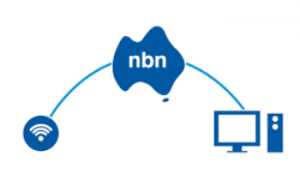SIP connections explained
VoIP, Voice over IP, SIP, SIP Trunk.
First off all SIP Trunking is a relatively new technology that has a host of benefits for organisations.
To gain a solid understanding of what it is, how it can benefit an organisation and what it’s benefits and drawbacks are, it’s important to understand how traditional phone systems work.
This will aid in drawing comparisons between the two systems while giving context to the differences between them.
A traditional phone system is quite simple. The paradigm has not changed much in the past hundred years. In theory, it’s possible to take an old landline phone from the 1960s, plug it into a phone line and make a call.
A telephone handset is used to convert voice into analogue signals that are passed over a copper wire, to a gateway or exchange, through the public telephone network to the outside world.
Traditional telephone systems depend on the original infrastructure, service providers and gateway equipment. In a large company, installing, operating and managing telephone infrastructure can be expensive and time-consuming.
Hence using SIP trunking can reduce costs considerably by simply removing most of the components needed in a traditional telephone system. Therefore it’s much easier to install and upgrade, and provides more functionality than a traditional system. In addition, it costs far less to make calls
SIP connections explained
SIP trunking is a protocol or communication standard that sends information over the internet, rather than over a fixed line telephone network.
When comparing it to a traditional telephone line, it converts voice into a digital signal. Consequently, this is sent directly from the handset, over the internet to the outside world. It bypasses gateways and exchanges as well as the public telephone infrastructure.
How does SIP trunking benefit a business?
Cost reduction. In a traditional telephone system, ISDN and PSTN lines carry high monthly rental charges and high call costs. The cost of making a call to another country is usually very high. Using a SIP system, monthly rental charges are reduced and included value plans are more common. This gives business a known monthly cost for all of their rental and call costs.
Scalability. With traditional ISDN and PSTN, scaling up was timely and expensive. Not only did you have to wait for more lines to be installed, but typically you had to purchase additional equipment for your PBX. With SIP, scaling up is as simple as making a phone call to your provider. Within minutes, you can have additional SIP lines added to your account.
Reliability and ease of use. In modern cities, it is usually fairly easy to get a good quality, high bandwidth internet connection. Most companies also have redundant connectivity methods. This means that a SIP system has a high quality, redundant connection. In a traditional system, if the phone lines are damaged outside a building, all telephone communication is cut off.
What are the drawbacks of a SIP system?
Especially relevant is that a SIP system depends entirely on the internet connection it uses.Furthermore, if a company uses a low bandwidth connection, voice quality and reliability can be negatively affected. In some instances, you may also need to purchase additional hardware to interface legacy PBX’s.
In conclusion
With the rollout of the Australian National Broadband Network, reliable connectivity will make SIP trunking a very real possibility for most companies.
Reproduced from an article in June 2017 SIP connections explained by Greg Lipschitz MD at The Summit group.

